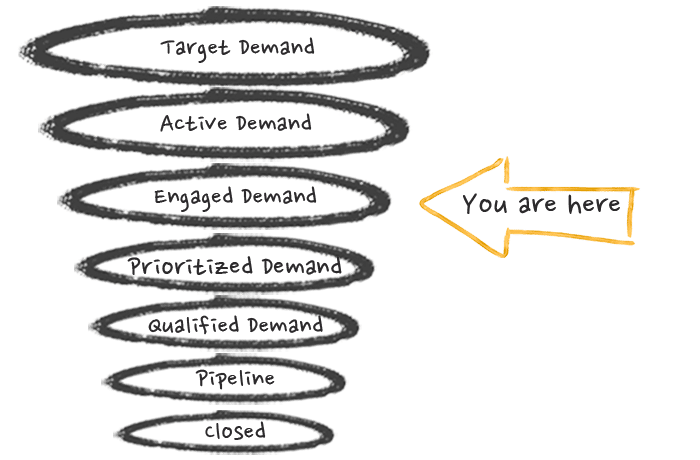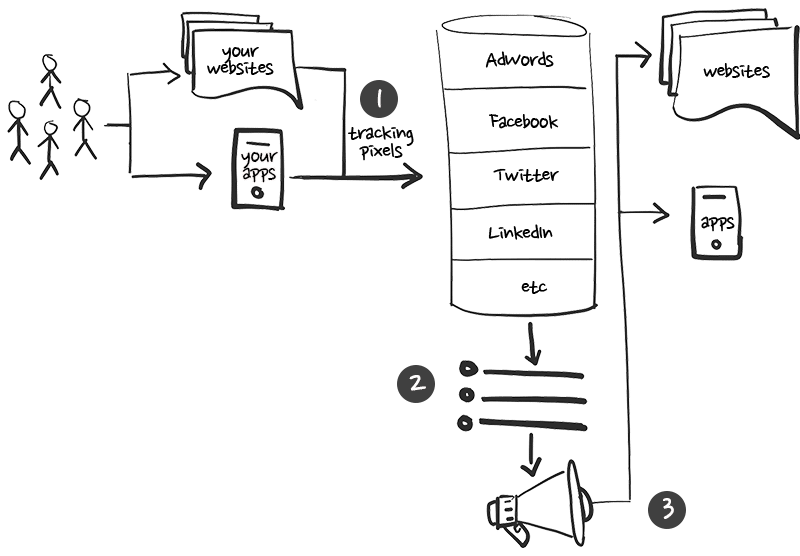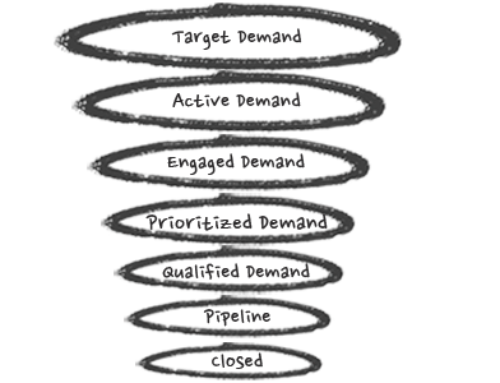
The principal objective in the Engaged Demand stage is to nurture the account along, driving a deeper level of engagement to validate that the account is moving into a more serious assessment phase.
Engaged Demand is perhaps the most active and expensive marketing step of the Demand Unit Waterfall as you work to interact with accounts in a deeper and more meaningful way. While the promotional costs may not exceed those in the other stages, the cost in time and effort to produce collateral and activities for the entire Demand Unit almost certainly will.
Stumbling blocks
Getting the collateral right. For example, do you need to produce webinars that address concerns that accounts have about your company’s product or technology? Will downloadable white papers address technical aspects that a member of the demand unit will need to understand? Should an explainer video be created to provide clarity on what your product/service does?
The only way to know whether you have the right mix is to carefully track which webpages are visited by prospects, which materials are downloaded, and which webinars are attended, etc. It is a multivariate puzzle that is best solved when it is developed and then tested and optimized against buyer journeys.
Preparing for success
Account-based advertising. With today’s tracking technologies there are tools and databases on the market that can track web traffic, map it back to a company, match that up with databases of company profiles that include things like company size, employees, and industry, map a company to behavioral data, such as job postings, technology consumption, and so forth. With all of that data at their disposal, account-based advertising companies like Terminus provide you with the ability to target your ads to specific companies and filter by departments, job functions, and seniority.
For example, if your target customer is in the finance group, but you know that IT is very involved in finance purchase decisions for your product or service, you can target director level and above staff in those two departments, running the same set of ads or customized ones that address the needs and objectives of each department.
Account-Based Advertising in-depth
See this post for more details on how account-based advertising works.
Events. For higher-priced or higher customer lifetime value products, hosting dinners with customers and prospects is also an excellent marketing strategy in this Engaged Demand stage. It has the added advantage of your sales team getting face-to-face with new opportunities.
Webinars. Getting prospects into webinars is also a very effective approach for determining the level of interest in your products at this Engaged Demand stage. Consider doing a couple of highly produced webinars that you can promote and play regularly. Make sure to have staff on hand when you are running the webinar to answer questions.
Depending on the scope of your Engaged Demand efforts, the assets you will need may include:
- Customer profiles or personas (I have a personal bias towards using Empathy Maps as I feel they give me more insight to develop messaging)
- Customer journey mapped to the purchase consideration cycle
- Collateral, webpages, events, and assets you will use to support the customer journey
- “Behind the firewall” downloadable assets so you can capture contact information
- Messaging
- Display Ads
- Landing pages with forms
- Webinars
Retargeting
Assuming you have your customer journey defined and assets produced, you can buy inexpensive display ads for remarketing. You’ll generally see high click-through rates and low cost per click; it’s often the most cost-effective channel.
Run retargeting campaigns across all the big ad networks: Google AdWords, Facebook, LinkedIn, Bing and Twitter. They all offer remarketing options, and you will find that some will outperform others, but you won’t know which ones until you test.
To run retargeting campaigns, you will need to place tracking tags from each of the ad networks on your website or specific pages on your site. If you aren’t using a tag manager tool like Google Tag Manager, consider adding it and moving all your tracking scripts to it. It makes the job of managing rules around which tags to fire when and where easy. An added advantage is that once set up, you will not need IT or developer support for adding, removing or modifying scripts, and you will also be able to add your own logic to where and when scripts fire.
A big plus with running these ad networks’ tracking codes is that they provide you with varying degrees of valuable visitor demographic and firmographic data.

Retargeting works as follows (simplified):
- Visitors come to your websites and apps where you have put tracking code for any of the ad networks you want to run retargeting campaigns on.
- In each ad network, you can set up different retargeting lists based on user profiles and behaviors
- Build campaigns that will run on websites and/or apps tied to retargeting lists in the ad network. If your marketing automation system is set up and connected to the ad networks through APIs, you can run your ads directly from there.
Team makeup
As with the prior stages of the Demand Unit Waterfall, you’re going to want the cooperation of your product management team who should have worked with you on your customer journey map. That map should either call out the kinds of collateral you need to create to move prospective customers to engage more or at least give you a solid base from which to plan the collateral.
You also need help from the marketing operations and sales operations teams to make sure that the account and contacts flow is being captured, scored and processed correctly.
In most companies, you will also find salespeople who deeply understand the customer base. They are a font of knowledge about how prospective customers think, the language they use, what their needs are and the variations on the buying process they use for evaluating your products. All of that is invaluable input for producing compelling marketing messaging and collateral in this Engaged Demand stage.
Deliverables
Accounts where their account score has met or exceeded the threshold you have set for sending them over to the sales team in the next stage: Prioritized Demand.
Typical materials that need to get produced in this Engaged Demand stage include:
- Messaging and landing pages customized to the different interests of the members of the Demand Unit
- Display ads for retargeting
- Webinars
- Downloadable assets to site behind the firewall to generate contacts
Measuring success for Engaged Demand
The principal KPI to track is to what degree your marketing/collateral is being consumed, with an eye towards testing and optimization to improve consumption and thus account scores.
Two factors impact consumption:
- The quality of your promotions.
- The quality of your content.
In this case, “quality” is defined as how well the promotions and content map to the prospects’ informational needs.
Depending on which assets you need to produce for your buyer’s journey, the KPIs could be:
- Pageviews & time on-page.
- Form completions & downloads.
- Event or webinar registrations.



